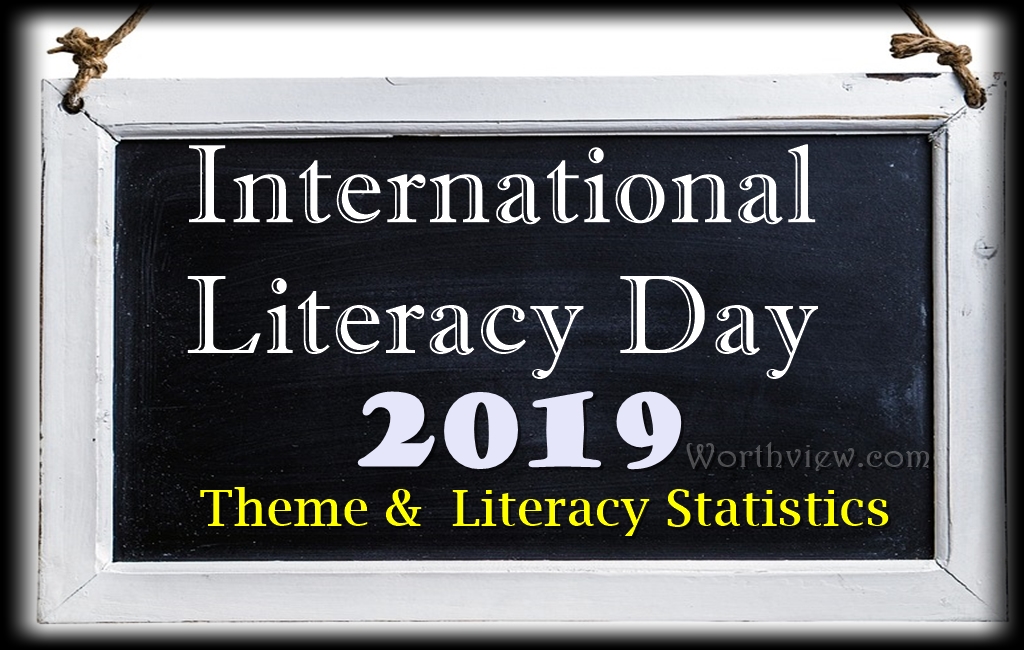Every year on September 8, International Literacy Day was celebrated globally. The idea of an International Literacy Day was born at the World Conference of Ministers of Education on the Eradication of Illiteracy, held in Teheran, Iran, on 8-19 September 1965. At the 14th session of UNESCO’s General Conference on 26 October 1966, September 8th was announced as International Literacy Day (ILD) Since 1967, International Literacy Day (ILD) was celebrated world wide annually to educate the public about the importance of literacy as a matter of dignity and human rights.
2019 Theme: Literacy and Multilingualism
International Literacy Day 2019 will focus on ‘Literacy and Multilingualism.’
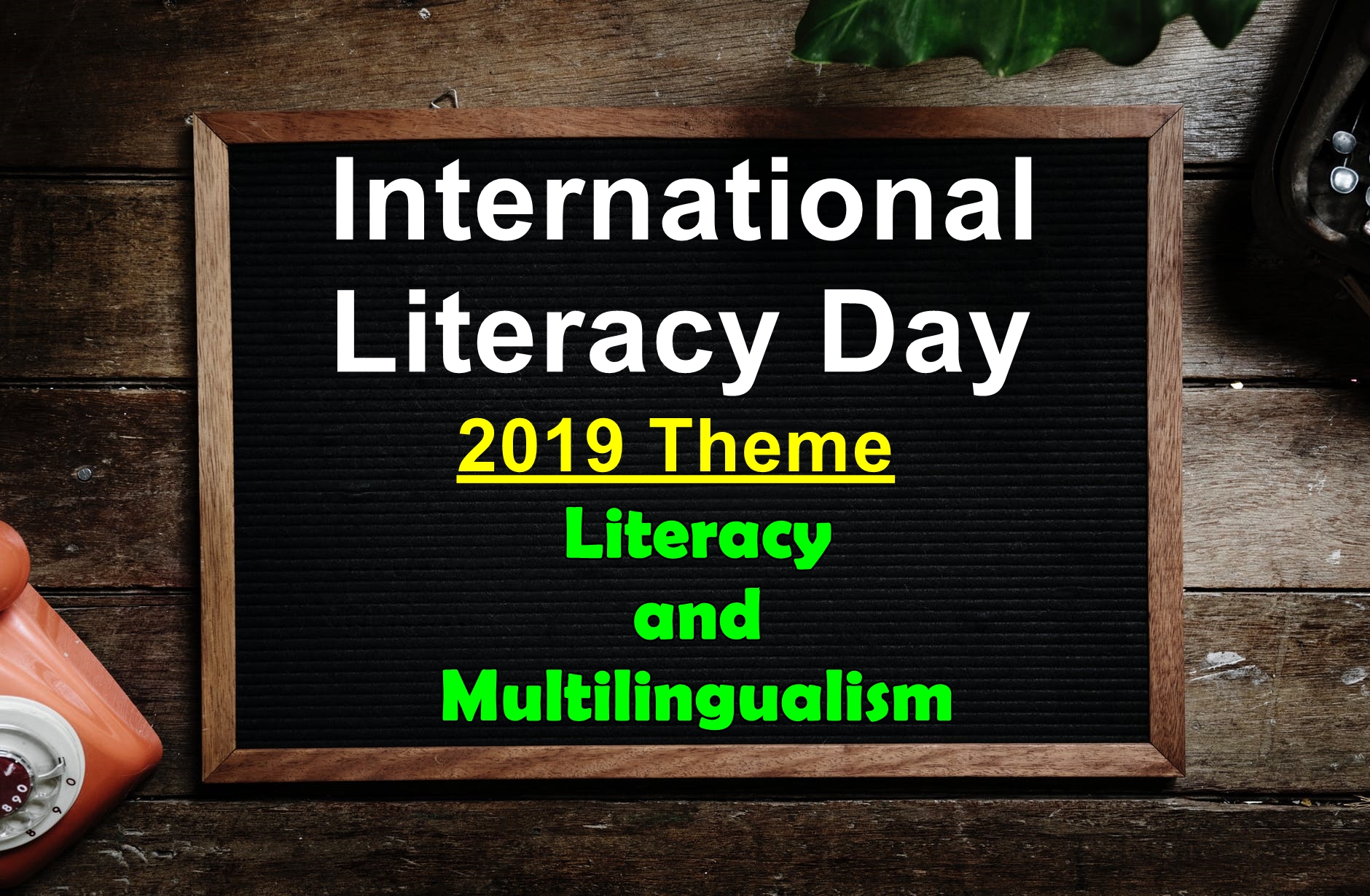
What is Multilingualism
Multilingualism is the ability to use more than one language, either by an individual speaker or by a group of speakers.
As per the latest reports, more than half of all Europeans claim to speak at least one language other than their mother tongue but many read and write in one language.
(Learn How to Say Thank you in 40 Languages)
Despite progress made, literacy challenges persist, distributed unevenly across countries and populations. Embracing linguistic diversity in education and literacy development is central to addressing these literacy challenges and to achieving the Sustainable Development Goals.
On the occasion of International Literacy Day 2019, the main characteristics of multilingualism in today’s globalized and digitalized world will be discussed, together with their implications for literacy in policies and practice in order to achieve greater inclusion in multilingual contexts.
Literate and illiterate world population
The following visualization presents estimates of world literacy for the period 1800-2014. As we can see, literacy rates grew constantly but rather slowly until the beginning of the twentieth century. And the rate of growth really climbed after the middle of the 20th century, when the expansion of basic education became a global priority.
Literacy rate by Age Group
The following map, using data from UNESCO, shows literacy estimates by age group for most countries in the world.
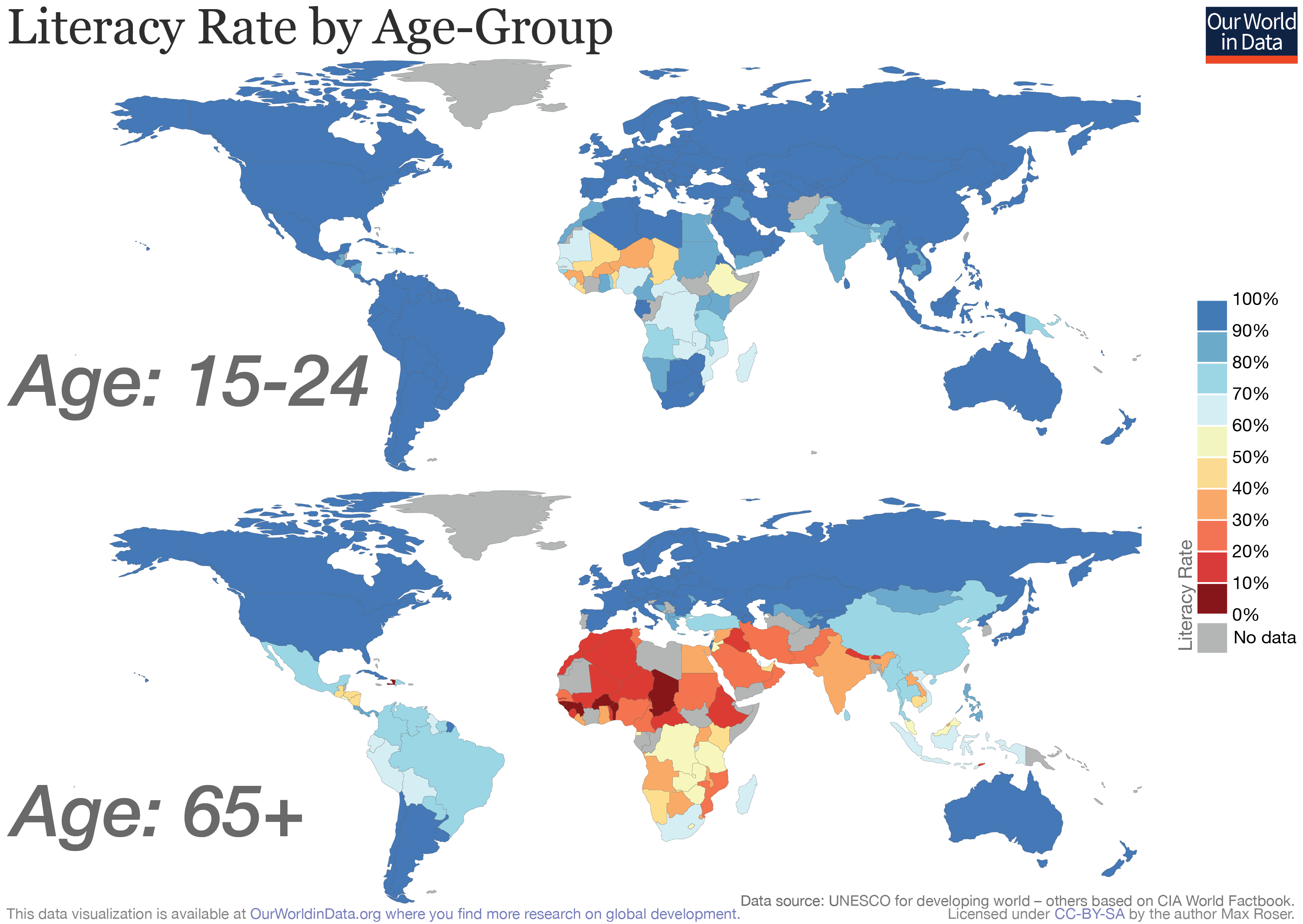
Literacy in India
According to Wikipedia, Indian literacy rate has grown to 74.04%, 82% for men and 65% for women as per 2011 provisional census figures. The next census is scheduled for 2020. Hope the numbers will increase by that time. Compared to previous census figures, India’s literacy rate increasing at very low pace despite government programmes.
God’s own country Kerala state has achieved the highest literacy rate of 93.91% while Bihar is the least literate state in India, with a literacy of 63.82%.
Six Indian states account for about 70% of all illiterates in India: Uttar Pradesh, Bihar, Madhya Pradesh, Rajasthan, Andhra Pradesh (including Telangana) and West Bengal.
Slightly less than half of all Indian illiterates (48.12%) are in the six Hindi-speaking states of Uttar Pradesh, Bihar, Rajasthan, Madhya Pradesh, Jharkhand and Chhattisgarh.
The below map shows the average literacy rate for each state and union territories of India, as per 2011 census final numbers.
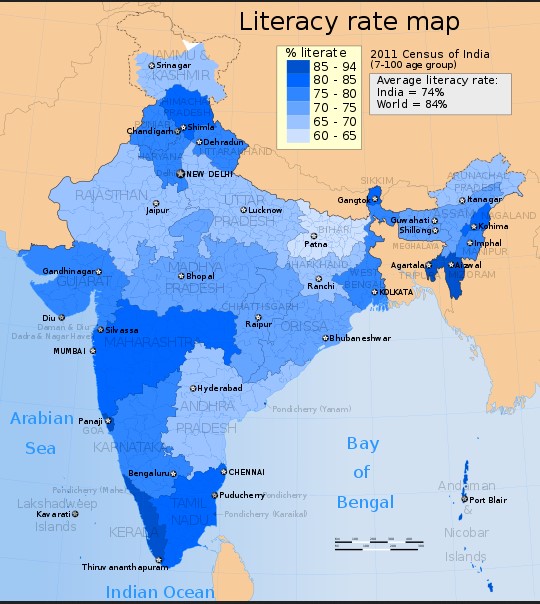
Source – https://en.wikipedia.org/wiki/File:2011_Census_India_literacy_distribution_map_by_states_and_union_territories.svg
World map of countries by literacy rate
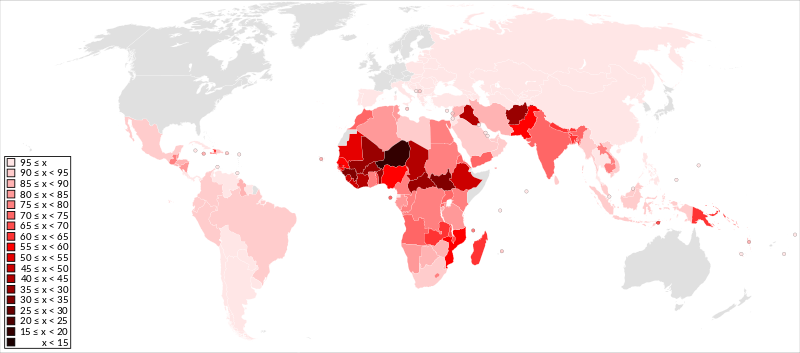
Related Posts

